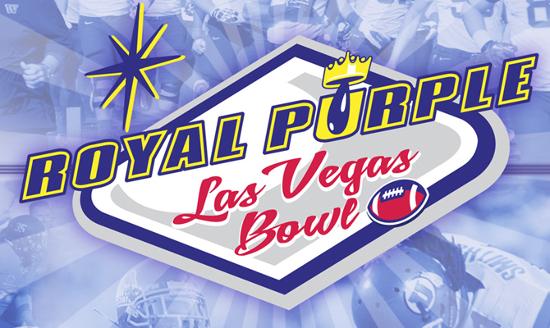As Brigham Young University tries to nail down its next head coach, the football program with a national championship and a national schedule finds itself playing yet another bowl game before Christmas.
Sure, the Saturday matchup with Utah is one of the most watchable and attractive bowls on the slate. Sure, the re-enactment of The Holy War should make for riveting television. Sure, BYU gains a considerable amount of national visibility in the earlier portions of each regular season, due to a nationally-oriented schedule with many ESPN appearances.
Yet, BYU’s place in the college football food chain is never more apparent than at bowl season — now, the past 10 years, and really, throughout the program’s bowl history, which goes back to the 1974 Fiesta Bowl against Oklahoma State.
*
Here’s the sobering truth about BYU’s place in college football’s postseason:
If you realize that the Cotton Bowl ceased to be a big deal from the 1996 through 2013 seasons (following the death of the Southwest Conference and before the emergence of the New Year’s Six system which restored the Cotton Bowl’s top-tier bowl status), and if you similarly acknowledge that the Fiesta Bowl, before moving to New Year’s Day in 1982, was also a second-tier bowl, BYU has never made a major bowl appearance.
The 1974 Fiesta and the 1996 Cotton represent second-tier bowl appearances. The Cougars never played in a top-tier version of either the Fiesta or the Cotton. They’ve never played in the Rose, Sugar or Orange Bowls. Today, with the Peach Bowl being another top-tier event within the New Year’s Six system, the Cougars do not enjoy a level of access on par with the conference champions from the Group of Five.
It’s all a little bit jarring: BYU has a rich history and tradition in college football, and a national title to show for it in 1984. Yet, as any college football historian knows, that national title ran through the Holiday Bowl without a game against a top-5 opponent on the New Year’s Day stage. That’s not the Cougars’ fault, but it’s a noticeable gap in this program’s history, whose accomplishments have often deserved a postseason event with genuine stature and large-scale visibility. To put a finer point on things, the 1983, 1984 and 1996 teams — which all finished the (post-bowl) season in the top seven — deserved to be in a playoff or, at the very least, a New Year’s Six equivalent.
Yet, BYU has never been able to translate a 10- or 11- or even (in 1996) a 13-win regular season into a top-tier bowl invite.
Hugely successful and prolific regular seasons have never given this program — unfairly kept on the margins in ways other programs (past or present) have not endured as regularly — the chance to prove itself against the best. It’s this long-term absence from the center of the conversation which makes most BYU fans desirous of entry into the Big 12 Conference and a chance to compete for the College Football Playoff every year. That’s the ideal scenario for the Cougars and their fans, and the current search for a new head coach weighs heavily on the minds of everyone invested in the long-term success of the program.
However, as much as BYU might want to get into the Big 12 and the playoff sweepstakes, it bears repeating that the Cougars have never (yet) appeared in a top-tier bowl game, a first milestone after which it would be so much easier to sell the program on a national scale.
The Las Vegas Bowl, which BYU returns to on Saturday against Utah, neatly focuses the Cougars’ situation and status in college football.
*
From 2006 through 2009, Bronco Mendenhall won at least 10 games in each regular season… and went to the Las Vegas Bowl instead of a far more visible and lucrative contest. Four years of excellence, and for what?
The folks at Boise State could tell you the same sad story. The Broncos deserved a Bowl Championship Series invitation in both 2010 and 2011 — in 2010 because of the team’s body of work; in 2011 because the other BCS bowl contenders owned relatively weak resumes. Yet, a pair of 11-1 regular seasons with major non-conference scalps got the Broncos and Chris Petersen a couple of trips to Vegas, instead of bowls and opponents which would have honored BSU’s regular seasons.
BYU, also from a Western program not tethered to a major urban area, sits outside the candy store, still locked out of college football’s biggest events. At least Boise State was able to run the table in a couple of seasons (2006 and 2009) and parlay those achievements into New Year’s Day bowls. The Group of Five umbrella gave a more flawed Boise State team (last year) another ticket to another Fiesta Bowl of consequence.
BYU? The Cougars are still waiting for their maiden voyage to a prime New Year’s Day game.
Las Vegas has its attractions and charms, and playing Utah is a fine consolation prize for this 9-3 season, but in the bigger picture, the Las Vegas Bowl — which BYU played in for five straight seasons — is the embodiment of the Cougars’ eternally low postseason ceiling.
BYU hopes to bust through that ceiling in the coming years, but in terms of the constant dance among independence, Big 12 membership, and a middle-ground plan to use the American Athletic Conference as a (non-permanent) gateway location, the Las Vegas Bowl offers a reminder that as far as the postseason is concerned, BYU’s current arrangements just don’t cut it.
The past 41 years of postseason appearances generally reflect the same.

